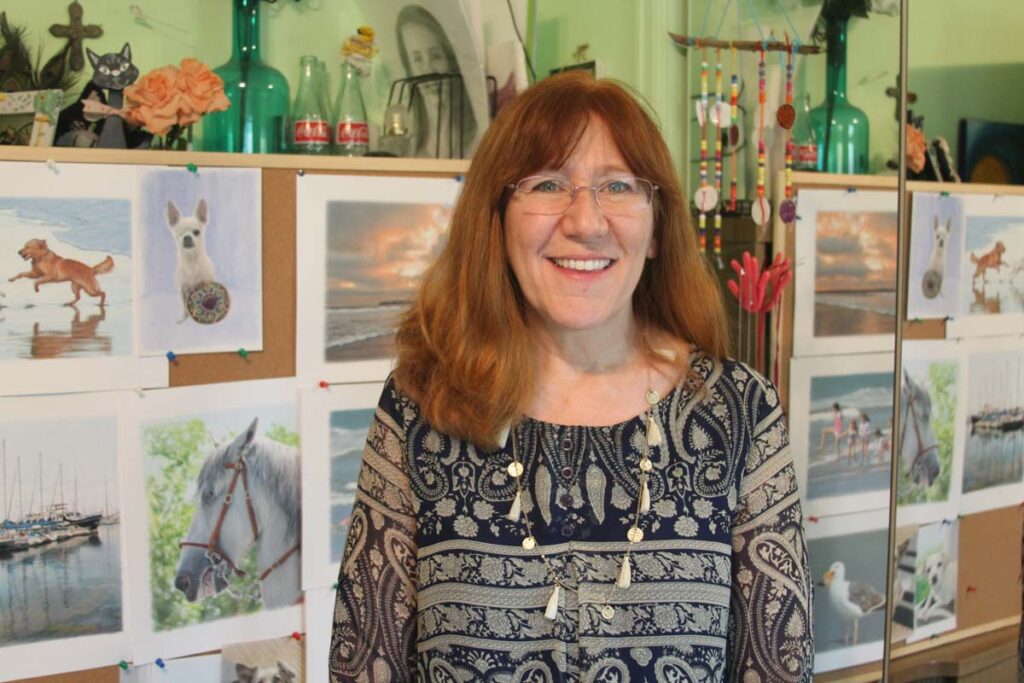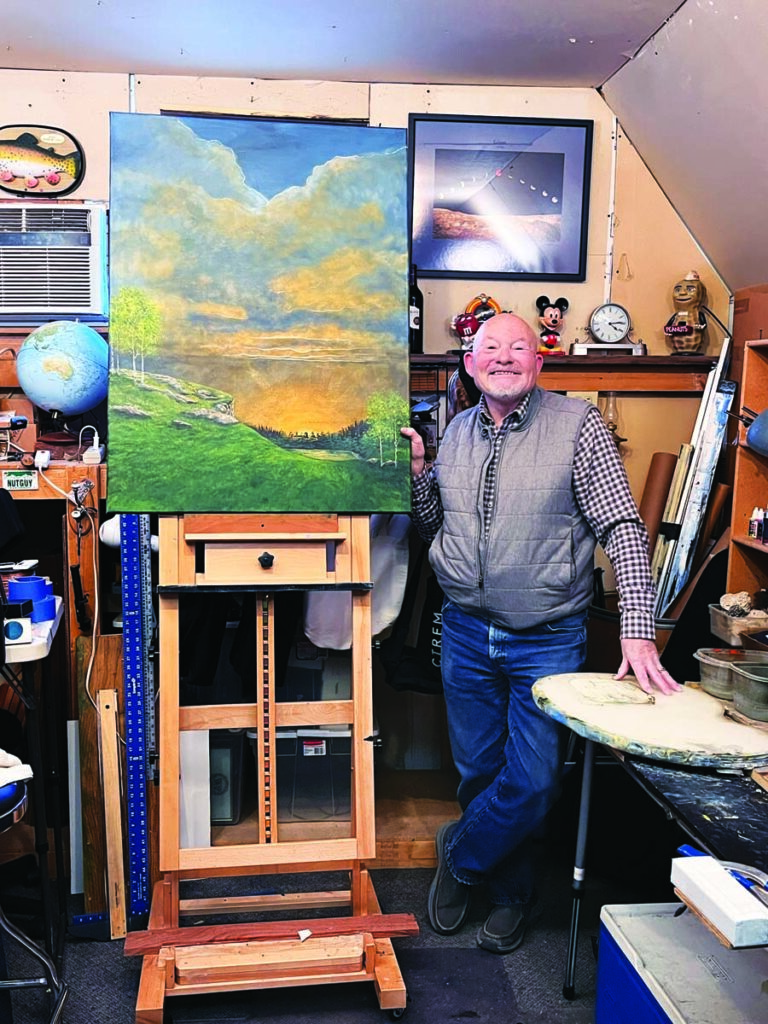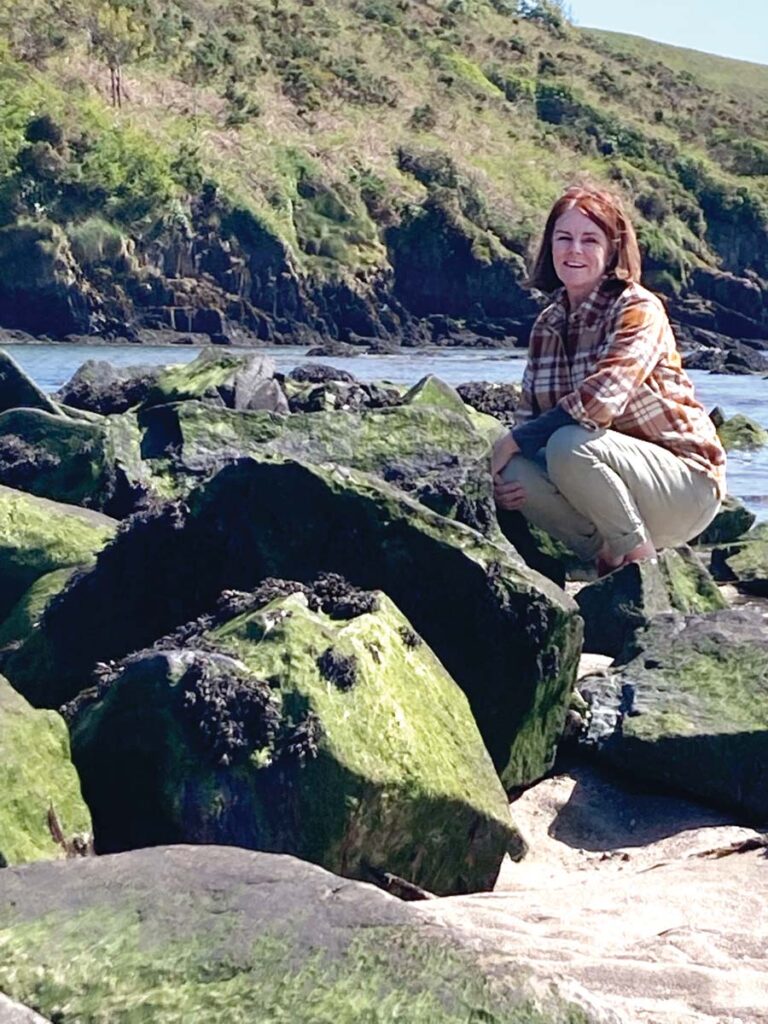“I think trying to be perfect often stops people from learning what they could do,” says Wheat Ridge pencil artist Sandra Davis. “I think everybody can learn to draw, but if people don’t think they can draw, they won’t put in the effort to learn how. When you start drawing, it’s important to love the process and not to focus on what you think you aren’t doing right.”
Davis tells people that she went from crayons to colored pencils.
“My mom and dad were World War II vets who grew up in the Depression. They had gigantic Sears & Roebuck catalogues, and my mom would teach me how to make paper dolls from the illustrations, then I got into using crayons to draw clothing for the dolls and whatever I could mimic. Crayons and pencils are similar, but with pencil there’s that ability to get fine, precise detail.”
As a pencil artist, it’s easy for her to quickly set up in virtually any location outside of her home studio.
“I love pencil because of the detail and realism I can get from it, but also because it’s so easy to do anywhere. I use a lap table when I’m on the run or waiting to pick up my son from his violin lesson.”
Davis knew she wanted to be an artist from the time she used coloring books and says she doesn’t remember a time when she didn’t love drawing and creating.
“I would rather do that than just about anything else.”
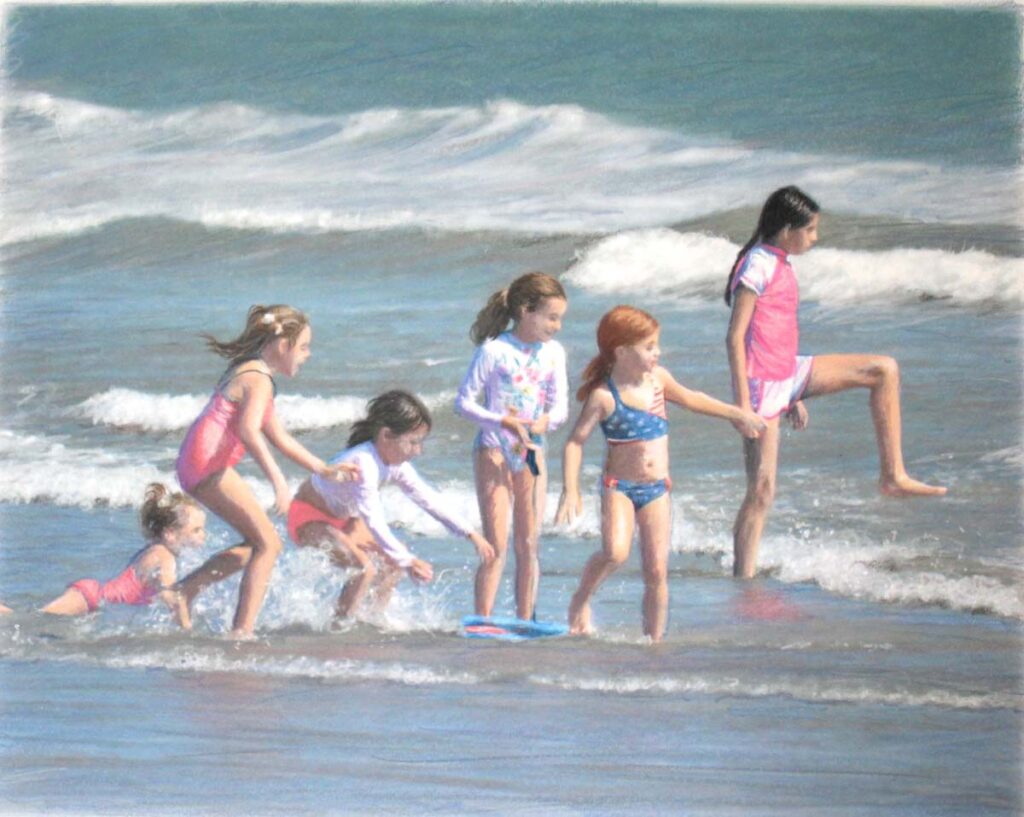
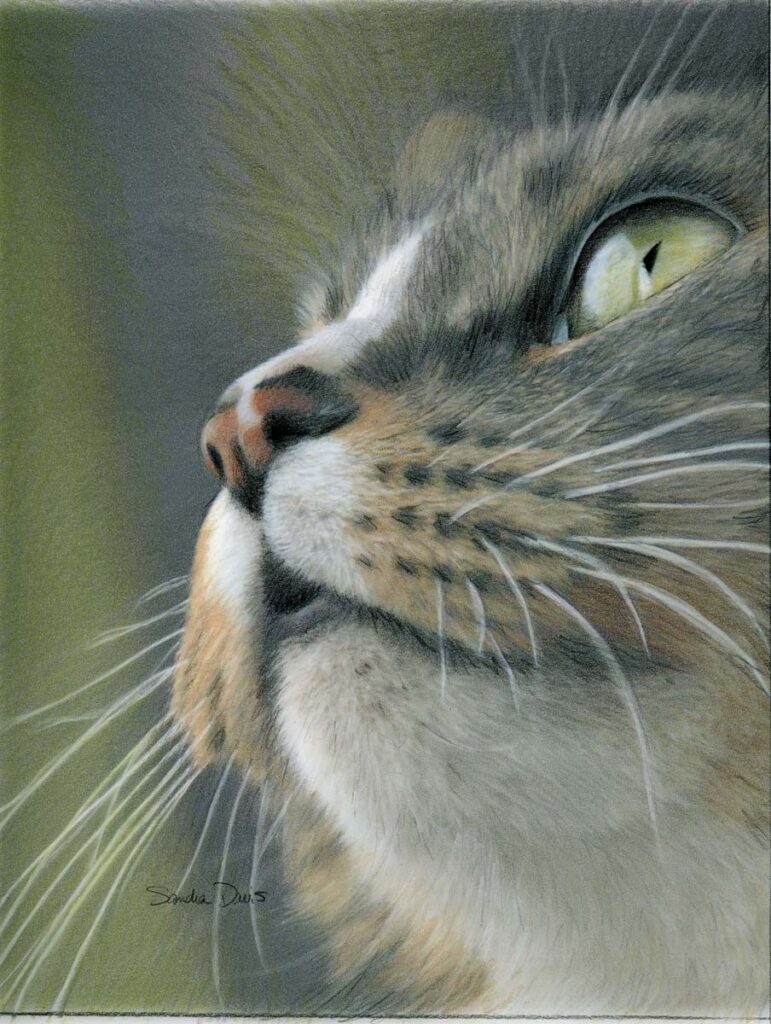
As a student at Wheat Ridge High, Davis began believing she could have a career in art. She studied at the University of Northern Colorado (then Colorado Teachers College) and did graduate studies there in print screening. While she enjoyed the process of printing, many of the chemicals were toxic – a major reason for her working with pencils.
“In college, I also liked oil and acrylic painting, however I’ve always gone back to pencil.”
But that goal of art as a career would be interrupted in order to make a living – the plight of many creative persons.
“I ended up going back to school to become a computer programmer and did that for many years – the money and benefits were good. It was lucky that I ended up at a non-profit – the Suzuki Association – where they knew of my art degree. They eventually moved me into the graphic design area of their magazine.”
Over time, creating graphics and proofreading articles about the Suzuki teaching method led her to realize that “the method translates well to teaching just about anything.”
She became busy showing in multiple galleries and taking on commissions to draw people and animals. She started classes at the recreation centers at both the Westminster and Wheat Ridge recreation centers, teaching colored pencil, watercolor pencil and some basic drawing classes – those started getting pretty big, she said – but then COVID-19 came, and classes were dropped.
“That wasn’t altogether a bad thing, because it was hard to teach classes and work up pieces for gallery exhibitions and also to get commissions done. It can be hard to focus on one area and do it well.”
With in-person meetings nearly impossible in 2020, Davis learned to use Zoom, which enabled her to continue an artist roundtable that she’d initiated two years earlier.
“The roundtable got artists talking to one another, supporting each other, helping with questions like, ‘How do I get into a gallery?’ or ‘How do I mat and frame my work?’ We had met at Panera, but when the pandemic hit, we could no longer do that.”
Zoom has provided a way for the monthly roundtable to continue.
“We’re going on our third year now. A group of 10 of us just did a show at the Lakewood Arts Council, and it was quite successful. Some of the artists had never been in a show before, and the show gave them that experience. Even people who have moved away or might be on vacation can participate in the roundtable over Zoom.”
Davis says animals are her specialty.
“Of the classes I taught, my favorite was pet portraits. Some people think of me as the cat artist, because I’ve drawn so many cats. The cat I have now is a tabby – I’ve done 20-plus drawings of her, and they sell – lots of people have tabbies! I’ve taken the liberty of changing her eye color through the years – sometimes green eyes, sometimes blue.
“I work on a fairly small scale; the majority of commissions I do are about 8 by 10 inches. The larger pieces, maybe 22 by 28, are stunning when they’re done, but those take a long time to do.”
Davis doesn’t teach classes at this time – now it’s private lessons, high school aged to mature adults.
“I have students who are nervous to try something, but I tell them, ‘You aren’t trying for perfection, you’re playing with what the medium can do, and once you figure that out then you have the key to the door that opens to whatever you want to do.’ Every student has their style within them already. Once they recognize their own gift, they take off and feel confident.
“I hope my art causes people to remember really good things in their life.”
Sandra Davis shows her work in several local galleries. Go to davisbeuschel.com/Sandra.php and choose “Exhibits.”

